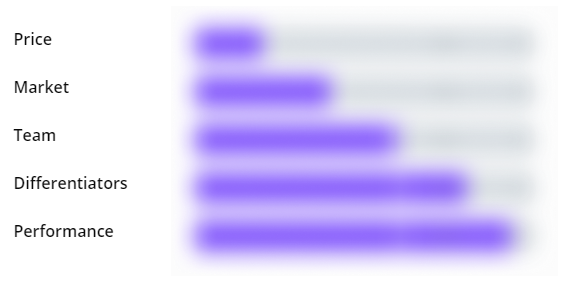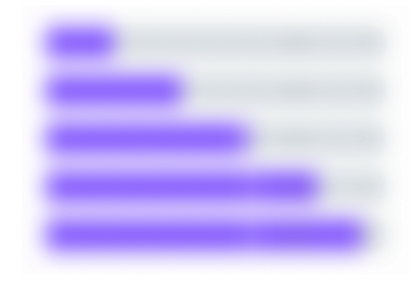InnaMed
Using at-home blood testing technology to enable personalized medicine
Overview
Raised: $1,281,106
Rolling Commitments ($USD)
06/29/2021
$12,438
1,407
2016
Healthcare & Pharmaceuticals
HealthTech
B2B/B2C
High
High
Summary Profit and Loss Statement
| Most Recent Year | Prior Year | |
|---|---|---|
|
Revenue |
$1,439,995 |
$237,435 |
|
COGS |
$0 |
$0 |
|
Tax |
$1,638 |
$808 |
| ||
| ||
|
Net Income |
$-212,485 |
$-474,753 |
Summary Balance Sheet
| Most Recent Year | Prior Year | |
|---|---|---|
|
Cash |
$572,704 |
$844,551 |
|
Accounts Receivable |
$150,000 |
$0 |
|
Total Assets |
$914,741 |
$882,560 |
|
Short-Term Debt |
$196,705 |
$3,426 |
|
Long-Term Debt |
$30,000 |
$0 |
|
Total Liabilities |
$226,705 |
$3,426 |
Price per Share History
Note: Share prices shown in earlier rounds may not be indicative of any stock splits.
Valuation History
Revenue History
Note: Revenue data points reflect the latest of either the most recent fiscal year's financials, or updated revenues directly from the founder, at each raise's close date.
Employee History
Upgrade to gain access
-
$25 /month
billed annually - Free portfolio tracking, data-driven ratings, AI analysis and reports
- Plan Includes:
- Everything in Free, plus
- Company specific
KingsCrowd ratings and analyst reports
- Deal explorer and side-by-side comparison
- Startup exit and failure tracking
- Startup market filters and historical industry data
- Advanced company search ( with ratings)
- Get Edge Annual
Edge
Synopsis
Modern medical science is becoming increasingly personalized. Genetic analysis can tell us all about our ancestral history. Tools like thermometers and scales track our health more effectively than ever with smart technology. Perhaps most significantly, analysis of blood detects chemical imbalances in our bodies, verifies pregnancies, manages diabetes, and tracks disease, among other things.
Unfortunately, collecting these samples presents a huge bottleneck in providing needed treatment. The process is logistically intensive, requiring physician’s orders, collection at a designated site, and proper handling. In addition, patient noncompliance with required testing and treatment is discouragingly prevalent.
What if patients didn’t have to go through the rigorous process of traditional blood collection and testing? InnaMed is answering that question with an at-home testing system. Patients will be able to use one-time collection tools and analysis cartridges to collect blood and conduct analysis, essentially condensing the entire blood collection system into a box that can fit on a countertop. Results are available within minutes, in some cases, and patients can report symptoms to effectively and comprehensively optimize treatment plans.
While the product has not yet been fully developed and will require FDA approval, InnaMed has secured an assortment of patents and publications to smooth the way to market dominance. Eventually, InnaMed hopes to significantly streamline the patient monitoring process, saving money, improving compliance, and easing the burden on patients.
InnaMed’s current Wefunder raise has been rated a Top Deal by the KingsCrowd investment team.
Price
To conduct further research and finance materials, contractors, payroll, marketing, and facilities InnaMed is raising through a Crowd SAFE at a valuation cap of $25 million with no discount. This is more than double the company’s $12 million valuation when it raised on Republic in 2019. While the valuation is quite high for a company still developing its product, its revenue is significant and growing (up five times from 2019), and we give InnaMed a middle-of-the-road price rating.
Market
The blood testing market is significant, though it isn’t huge. The North American blood testing market was estimated at $19.45 billion in 2020, and is growing at a CAGR of 2.32%, predicted to be worth $21.82 billion in 2025. The global market is much larger and is expanding significantly faster, at a CAGR of 6.6%; however, the real question is just how quickly this traditionally out-of-home industry will migrate to at-home testing. Greater acceptance of telehealth is leading to increased emphasis on such options throughout the healthcare industry.
We should also note that InnaMed’s product will be able to replace virtually the entire blood screening process, so its total addressable market is closer to the entire market size than other startups that account for only a small share of their respective industries. As the pandemic begins to draw to a close, InnaMed has smartly pivoted to a B2B model, working with pharmacies directly on development and ensuring a product-market fit.
Team
InnaMed’s leadership team is largely young, but holds sufficient relevant experience. CEO and co-founder Eshwar Inapuri holds a Bachelor’s Degree in Bioengineering from The University of Pennsylvania, and has been working to build up his experience throughout his education. He started with therapy R&D while still in high school, spent some time working in finance for Clark Hill PLC, and spent three years working on point-of-care diagnostics research at UPenn while developing InnaMed. While he’s fresh out of college, he has already picked up some level of practical work experience and has had his findings published in a peer-reviewed journal, PNAS.
CSO and co-founder Anup Singh is slightly more experienced. He holds a Master of Science in Physics, also from UPenn, and is putting his PhD in Bioengineering at UCLA on hold while he works on InnaMed. Like his co-founder, he has spent a number of years in research working with microfluidic technologies.
Likely to make up for the pair’s somewhat limited work experience, they recently brought on board Commercial Development Lead Tom Larson. Larson is a twenty-five-year veteran of the pharmaceutical and healthcare industries. After working more than a decade in various sales and marketing roles with Abbott, Larson joined Johnson & Johnson and a series of pharmaceutical companies of varying sizes; most recently, he served as Senior VP and CCO at Ascendis Pharma, an experimental/innovative biotech company. These experiences place him in an apt position to help guide the evolution of InnaMed.
Differentiators
When it comes to setting itself apart from the competition, InnaMed is unmatched. The market is beginning to fill up with products that can complete the blood collection process at home, but there is a notable absence of products that can also complete the testing process and provide results almost immediately. On that front, InnaMed has taken the lead, and it is taking all the requisite steps to ensure the defensibility of its product with a broad assortment of 9 patents and 5 peer-reviewed publications on its tech. Potential competitors have a long way to go before they can pose a threat to InnaMed.
Performance
As with InnaMed’s differentiation score, there is much to admire about this startup’s early performance. The company remains pre-profit, but has seen stellar revenue growth, especially in the past year which saw $1.44 million in revenue (a 5x increase over 2019). In large part, this is due to interested clinical parties financing R&D and pre-ordering specific testing cartridge units. InnaMed has also successfully raised funds on Republic, demonstrating a capacity for marketing and financial savvy; this has kept outstanding debts low at less than a quarter-million dollars.
Bearish Outlook
While InnaMed’s early success and strong differentiation promise a bright and lucrative future for the company, it is still technically pre-product; all of its early funding has come through R&D funding, pre-orders, and a prior successful raise. Though the technology holds significant promise and could be a game-changer for providers and patients alike, it will need to prove product safety, efficacy, and accuracy before it can begin replacing on-site blood testing at scale. The product has a long way to go before it can be mass-produced and start providing the large-scale, recurring revenue it has the potential for.
Bullish Outlook
Though InnaMed isn’t yet ready to show significant returns, it is clearing potential roadblocks along the way. It is securing extensive product protection through patents, and engaging future customers along the development process. While it will need to clear regulatory hurdles with the FDA before production, potential investors will be pleased to know the process is unlikely to take more than a year to a year-and-a-half, which lowers risk. InnaMed is in a very good position to become dominant in a multi-billion dollar industry, and as of yet, its competition has not caught up to what it is offering. At the very least, a potential acquisition somewhere down the line cannot be ruled out, as big players in the healthcare industry are likely to want to corner the at-home blood testing market as quickly as possible. The company does not appear to be headed for an exit, but even without one, they are being financially and technologically smart and could begin to see significant returns for investors in just a few years.
Founder Profile
InnaMed Co-Founder Eshwar Inapuri on Disrupting Diagnostics
With nine patent applications and grants from NASA and the US Deptartment of Health & Human Services, InnaMed is working to power personalized medicine with blood tests done from home. The Y-Combinator-backed team is led by CEO Eshwar Inapuri who has a background in research and development at the University of Pennsylvania. He, along with his team of scientists and entrepreneurs, is aiming to disrupt the at-home diagnostic toolkit market. InnaMed generated more than $1.4 million in revenue in 2020 through its multi-year collaborations.
We spoke with Eshwar and his team earlier this year to discuss his visions for InnaMed, a KingsCrowd Top Deal.
Note: This interview was conducted over phone and email. It has been lightly edited for clarity and length.


